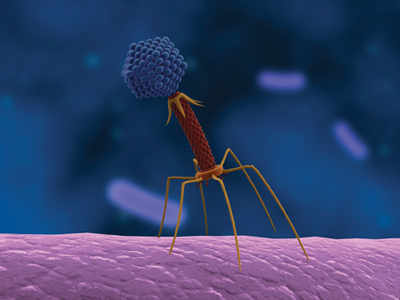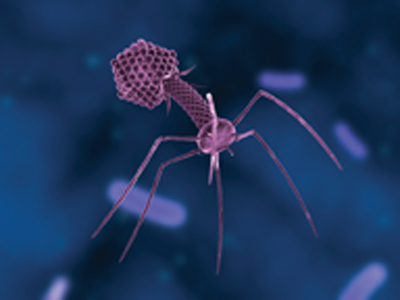
PIC Update: Examining Bone Reserves
By PIC
Features Business & Policy Consumer IssuesEffect of pre-lay medullary bone reserves on changes in bone mineral reserves
Egg-laying hens are susceptible to osteoporosis, a depletion of
structural bone reserves. The problem can be severe in high-producing
caged hens and is commonly referred to as caged layer fatigue.
By Tim Nelson, Executive Director, and Kimberly Sheppard, Research Co-ordinator
Egg-laying hens are susceptible to osteoporosis, a depletion of structural bone reserves. The problem can be severe in high-producing caged hens and is commonly referred to as caged layer fatigue. The bone weakness associated with osteoporosis can increase the risk of bone breaks during the laying cycle and at depopulation (reportedly up to 29 per cent at depopulation and 100 per cent after processing).
Broken bones are a welfare problem that also results in decreased production – sometimes to the point of hens going out of lay. The decreased calcium reserves in osteoporotic bone also result in weakened shells, as some of the calcium used in shell formation is mobilized from bone. Medullary bone is a non-structural form of bone that is mobilized, usually during the night, as calcium is needed for eggshell formation, and replaced during the day when calcium intake exceeds demand. As hens get older, the re-deposition of medullary bone appears to be more diffuse throughout the bone cavity.
Therefore the problem of weak bones substantially affects the profitability of the poultry industry, both directly and indirectly. To address this problem, Dr. Doug Korver and his research team at the University of Alberta have been carrying out a research project to determine the extent of medullary bone formation prior to onset of egg production and the effect of provision of organic trace minerals on long-term skeletal health, egg production and egg quality traits of laying hens.
Groups of pullets were fed one of two dietary mineral treatments, a diet supplemented with a commercial-type laying hen mineral pre-mix, and a diet supplemented with higher levels of organic copper, manganese and zinc. The researchers assessed the potential protective effect of organic trace minerals by switching groups of hens in each mineral treatment from a low-calcium pre-lay diet to high-calcium layer diets at various ages. This should have resulted in a variation in the ability of hens to deposit medullary bone prior to the first egg being laid. This was done in order to study changes in bone mineralization throughout the production cycle.
Birds were maintained to 60 weeks of age, and measurements included body weight and feed intake. Bone mineralization was measured throughout the trial using quantitative computed tomography, which measures bone density in live birds. Egg production was recorded daily, and eggshell quality traits were measured at four-week intervals from 20 to 60 weeks of age.
Their findings? The researchers did not increase the rate of osteoporosis (which was very low in all treatment groups), indicating that the strain used was resistant to caged layer fatigue. However, results of the bone mineral measurements indicate that organic trace minerals might differentially affect the response of laying hens to the timing of increased calcium supply in the diet. Conclusive recommendations cannot be made at this point regarding the protective effect of organic trace minerals, since the birds did not reach a point where structural bone reserves became limiting to bone health. However, in cases where bone health is compromised or may become compromised, the differential effects of organic trace minerals on bone health make these sources of interest to researchers and producers. Until further studies can be conducted, the researchers recommend producers follow the primary breeder recommendations for the age at which to increase dietary calcium prior to the onset of lay.
Featured Researcher
 |
Dr. Mansel Griffiths obtained his B.Sc. degree from North East London Polytechnic and his PhD from Leicester University. He joined the Hannah Research Institute, Ayr, Scotland, in 1974.
In 1990 Dr. Griffiths was appointed to the Dairy Farmers of Ontario/NSERC Industrial Research Chair in Dairy Microbiology in the Food Science Department, University of Guelph. Dr. Griffiths is also Program Chair for the M.Sc. in Food Safety and Quality Assurance and is the Director of the Canadian Research Institute for Food Safety. In 2006 he was appointed Visiting Professor at Jinan University, China.
His current research interests include rapid detection of foodborne pathogens; factors controlling growth and survival of microorganisms in foods; and beneficial uses of micro-organisms. Dr Griffiths has authored more than 250 peer-reviewed articles and appears on ISIHighlyCited.com.
Dr. Griffiths is an Editor of Applied and Environmental Microbiology, an Associate Scientific Editor of the Journal of Food Science, a member of the Executive Editorial Board of the Journal of the Science of Food and Agriculture, and serves on the editorial boards of several leading food microbiology journals. He serves on the Expert Scientific Advisory Committee for Dairy Farmers of Canada and chairs the Canada IDF Coordinating Committee on Food Safety and the International Advisory Board of “Biotracer”, an EU Project. He was the recipient of the International Association of Food Protection Maurice Weber Laboratorian of the Year for 2002. He served on the Ontario Meat Inspection Review, served on the Expert Scientific Advisory Committee in 2004, and currently sits on the Expert Advisory Committee of the Listeriosis Investigative Review.
Use of bacteriophages against E.coli
Dr. Mansel Griffiths, University of Guelph
 |
|
 |
|
| Virulent bacteriophages are viruses that only attack bacteria. Bacteriophages can attack a large number of related bacteria or can specifically attack only a few species or strains.
|
Avian colibacillosis, a diarrheal disease caused by E. coli that can affect chickens, turkeys, and other avian species, causes substantial economic losses to the poultry industry. Several E. coli isolates are commonly associated with colibacillosis in poultry but it has been reported that certain types, designated serogroups O1, O2, and O78, are mainly involved in this disease. Treatment of the disease is becoming complicated due to the high rate of antibiotic resistance observed in these serogroups, and because of pressure to limit antibiotic use in animals.
One possible alternative to antibiotics is the use of virulent bacteriophages, which are viruses that only attack bacteria. Bacteriophages can attack a large number of related bacteria or can specifically attack only a few species or strains. They have been used to combat infection in humans for many decades and the possibility exists that they can also be used in veterinary medicine. Previous work by Huff and colleagues at USDA has shown that bacteriophages can prevent and treat colibacillosis in broiler chickens.
Dr. Mansel Griffiths and his research team at the University of Guelph carried out a project to isolate and characterize bacteriophages that could be used to kill all E. coli serogroups, viz O1, O2, and O78, commonly associated with colibacillosis. The researchers isolated seven bacteriophages from wastewater and fecal samples from poultry processing plants.
Their findings? Two of the isolated bacteriophages killed all tested strains of E. coli serotypes O1, O2, and O78. These bacteriophages were studied to determine their shape, size and genome size; as well as their ability to survive in acid environments. The latter is an important trait, as the bacteriophages will have to survive the acid environment of the stomach to be able to combat infections of the gut. The researchers conclude that these two isolated bacteriophages have potential for use as agents to prevent and combat avian colibacillosis.
| PIC’s Picks It’s Innovation Conference time again. Where did last year go? These are tough times, so this year we need your support more than ever – and you need the business solutions advice and ideas, you’ll get from this year’s conference as we “Focus on Productivity.” Be there or ….well, be there, because we want you to be part of it. If you want to turn the downturn into an upturn you’ll find no better information to help you do it than at the conference. We also need your input into the Poultry Worker of the Year Award. So if you have a person you think is deserving of this prestigious award please, please, please – tell us! This year the award will be presented by the Dr. George Zegarac, deputy minister of Agriculture, Food and Rural Affairs. The golf day was a great success. Sponsorships were very generous but numbers were down, a direct reflection, we suspect, of the economic downturn.Thanks to everyone who turned out on the day. See you next year and please bring a friend! See you at the conference and don’t forget the Poultry Worker of the Year Award nominations! |
Print this page